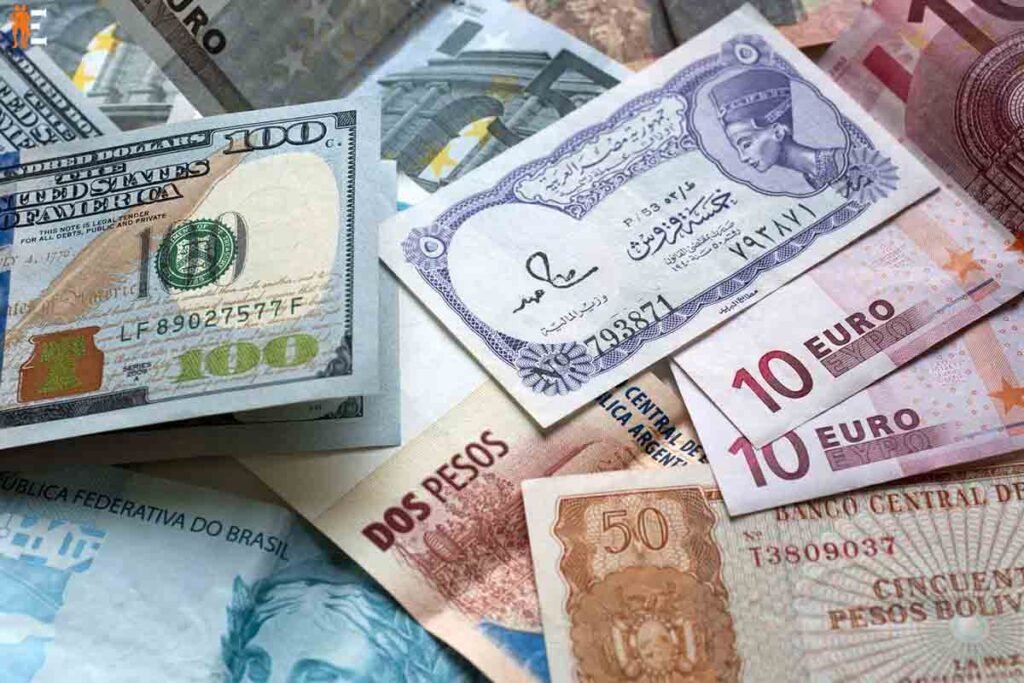Few of us could have guessed how unpredictable the following year would be in December 2019. The COVID-19 epidemic has had such a wide influence that it would be difficult to discover something that hasn’t altered. Exchange rate volatility is one of the most important external measures of the economic effect of the last year’s global upheaval.
In 2020, twenty-one nations saw a devaluation of more than 10%, while nine countries had a depreciation of more than 25%. This is a significant turnaround from 2019 when only twelve nations witnessed a depreciation of more than 10% and only three countries had a depreciation of more than 25%. Following is a deeper look at the year’s nine worst-performing currencies, which the study considers COVID-19 impacting global currency.
Here is How is COVID-19 impacting global currency;
1. VES — Venezuelan Bolivar Soberano

Venezuela has experienced the world’s highest inflation for many years after COVID-19 impacting global currency and 2020 will continue the trend. The bolivar soberano (VES) has dropped 96% versus the US dollar this year, accelerating dollarization. If you had changed $1000 USD into bolivars a year ago, it would only be worth around $42 now. Although a 96% depreciation is shocking, it is still somewhat less than last year’s 99% depreciation. Historically, the central bank rate has trailed behind the parallel market rate, but the two rates have stayed close this year.
2. ZWD — Zimbabwe Zimdollar
The tight link of rates in Venezuela contrasts with Zimbabwe, whose official and parallel rates were out of sync for most of the year due to changes in exchange rate management. The currency has lost 80% of its value versus the US dollar in the past year. Although the Zimdollar started the year with a tightly controlled float, the government fixed the currency in March at 25 ZWL to 1 USD. Yet, the government lacked the resources (through foreign reserves or policy) to maintain a fixed rate at a time of heightened upheaval.
The currency’s parallel market value plummeted over the following several months, and the government abandoned the peg under criticism in June. Weekly auctions will now set the official exchange rate in the future. The auction-set rates saw months of severe depreciation, although the latter quarter of the year witnessed some stability and a narrowing of the gap between the bank and street values of the Zimdollar.
3. SYP — Syrian Pound
The Syrian pound is a pegged currency that has lost 65% of its value against the US dollar in the last year due to a series of devaluations. Once the government altered its long-standing peg in late 2019, COVID-19 impacting global currency then currency started 2020 at a newly appreciated (but mostly unchallenged) rate. Because of the economic consequences at the start of the year, they reversed the adjustment in March.
The government subsequently devalued the currency even more in June, when the parallel market value plummeted and sanctions against the government were imposed. Nevertheless, neither reduction has come close to matching the low levels observed on the parallel market – although the exchange rate remains at 1256 SYP/USD, the parallel market value is between 2,700 and 3,000 SYP/USD.
4. SRD — Suriname Dollar

The Suriname dollar, like the Syrian pound, remains fixed, despite a 47% depreciation versus the US dollar in October. Some of Suriname’s loans slipped into default throughout the summer, and COVID-19 impacting global currency the repercussions of financial mismanagement. In July, the nation elected a new president who campaigned on economic changes.
Despite the difficulty and unpopularity of the actual steps being taken to balance the economy (the devaluation of the currency and the removal of gas subsidies), Suriname’s long-term prospects are a little brighter than those of its peers on this list, as the country stands to benefit from recently discovered offshore oil deposits.
5. SCR — Seychelles Rupee
During the last year, the Seychelles rupee has depreciated by almost 35% versus the US dollar, a significant change from many years of stability. Demand for hard cash is not necessarily substantially greater than in the past, but availability for foreign currencies has been severely strained this year owing to the pandemic’s near-complete stop of international tourists.
International tourism accounts for around 55% of the country’s GDP and is the country’s primary source of foreign currency. Being an island nation, the country is mainly reliant on imports, hence the need for hard currency is mostly driven by commercial demands. The outbreak of COVID-19 impacting global currency. The difficulties grow over time as dollar demand puts downward pressure on the currency and a weak currency makes imports more costly.
6. ZMW — Zambian Kwacha
The Zambian kwacha fell to a new low in almost every month of 2020. Throughout the course of the year, the currency fell by nearly 30% versus the US dollar. The kwacha fell 19% in 2019, however, the kwacha is expected to fall more in 2020 due to the country’s economic difficulties. Demand for Zambian exports declined during global market turmoil, while efforts to control the virus reduced production of exportable items, causing the availability of hard currency to tighten. Zambia has some of the same issues as Seychelles, as a sinking currency and decreasing foreign currency inflows make the normal challenges of import dependency a big drag on the economy.
7. AOA — Angolan Kwanza
During the last year, the Angolan kwanza has fallen 28% versus the US dollar, owing mostly to the pandemic’s effect on the oil sector. Due to several of the same causes that rendered the economy vulnerable in 2020, the currency fell 34% in 2019. This is how COVID-19 impacting global currency. Angola’s economy is strongly dependent on oil output and pricing, its foreign currency reserves are depleted, and a parallel market exists.
Although the official rate of the currency was regulated with a trading prohibition until October 2019, even with the more freely floating currency, there is still a difference between the official and parallel market values.
8. ARS — Argentine Peso
This year, the Argentine peso has declined 27% versus the US dollar, owing mostly to a “uniform daily devaluation” approach. When the government endeavored to limit the collapse of foreign currency reserves, this plan was abandoned in October in favor of a regulated float. The peso, like the kwanza, actually fell further in 2019, falling 37% under IMF economic supervision.
The economic climate of 2020 has added price freezes, economic contraction, and pandemic lockdowns to the current issues of currency restrictions and numerous exchange rates. This challenging economic climate has driven a number of significant foreign corporations out of the country, while others have reduced their presence.
9. TRY — Turkish Lira

In 2020, the Turkish lira fell 26% versus the US dollar, especially in the spring and autumn. Many factors have contributed to the currency’s depreciation, including unconventional monetary policy and a lack of trust, which has discouraged investment, concerns about the depletion of foreign reserves, concerns that the central bank is politically compromised, and speculation that Turkey may face international sanctions. This year, the central bank has depleted its foreign currency reserves in a bid to prop up the lira, and reserves have fallen to their lowest level in roughly 15 years. Sanctions in Turkey are also on the rise, complicating matters.
Regional tensions have been tumultuous this year and Turkey’s position in the Nagorno-Karabakh conflict was investigated worldwide, and the U.S. presidential election also had a toll. Although Turkey has received rebukes and criticism from US government institutions, the current US president’s relationship with Turkish President Erdogan has remained cordial. The forthcoming presidential change in the United States may raise the prospect of US penalties on Turkey.
10. GBP – Great Britain Pound
Since the UK has virtually simultaneously navigated the epidemic and Brexit, it is impossible to determine the isolated effect of one against the other on the economy as a whole. That being said, we know that the economy has suffered greatly as a result of the virus’s many forms of lockdown, travel restrictions, company shutdown, job loss, and pressure on the healthcare system. Indeed, after the first lockdown in March 2020, UK GDP fell by a record 19.8%, and the pound fell to its lowest level against the US dollar in more than 30 years.
The UK, like many other countries, has failed to manage the virus, and the effect has been felt across the country despite the deployment of numerous government financing initiatives. Unsurprisingly, investors have been negative, alarmed by a large number of instances throughout the nation, as well as Brexit-related trade fears and the pound’s accompanying volatility. Yet, the start of a new year brought with it fresh hope in the shape of a successful vaccination and the chance of a return to normalcy that it brought.
Although it has not been an easy route, and currency markets have fluctuated as components of the vaccine have been treated with skepticism and even criticism, the United Kingdom has created a world-leading immunization program, and instances have now been reduced to extremely low levels. As a consequence of this accomplishment, the economy is slowly but boldly reopening in accordance with the government’s planned roadmap to independence, and economists believe that the pound will rebound quickly, returning to pre-Covid levels as early as 2022.
11. Euro
For a multitude of reasons, Covid-19 has had a substantial influence on the euro. The Eurozone is more intimately interwoven with international commerce and has more extensive linkages with China, which means the downturn was faster to damage the euro in the beginning. Moreover, the economy was in a more vulnerable position than the US and the UK, putting pressure on the central currency, and thus the virus arrived at a time when the economy was already ailing from COVID-19 impacting global currency.
COVID-19 impacting global currency, raising concerns of a double-dip recession. Economic recovery is expected to lag behind that of China and the United Kingdom, and will be heavily reliant on the restoration of supply chains and the successful implementation of a vaccine rollout, the latter of which has experienced harmful interruptions due to production, distribution, and concerns about side effects. The vaccination deployment is gaining steam, which will undoubtedly boost the economic picture, albeit it remains well behind that of the United Kingdom and the United States, respectively.
12. USD – US Dollar
The pandemic has had no effect on the US currency at the start of 2020. Because of the US economy‘s generally favorable performance and distance from China, the US dollar outperformed a basket of currencies, including the safe haven Yen, which fell as investors worried about the increasing risk in Asian currencies. In addition to this, (Handoyo, Citation2020) predicted that COVID-19 impacting global currency, pandemic also triggered global economic trade.
Flash forward to 2021, and the USD was under strain as a result of the virus’s unchecked spread across the country in 2020. Experts are universally negative about the condition of the safe haven currency, forecasting a severe and persistent collapse in Q1 and Q2. Nevertheless, with a difficult election now in the rearview mirror, a successful vaccination rollout in full speed, and the deployment of ambitious steps to stimulate robust economic growth, those forecasts have been mostly debunked so far, and the dollar has outperformed other major currencies.
Moving into the second half of 2021, investors will be watching how other nations recover from the epidemic, since global economic recovery may weaken the Dollar.











